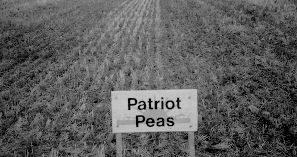| | Follow your planned work schedule as closely as possible. If you must change the schedule, inform everyone involved in the project.
Consider the farmer cooperator's routine field operations when laying out plots. Strip plots should be parallel to the field edge and far enough from the field edge to allow passage of the farmer's equipment. The width of the farmer's sprayer is often the most important consideration. If the farmer will not be spraying the plots or if the plots are to be sprayed with a chemical other than the ones used on the rest of the field, then the distance between the plots and the field edge should be some multiple of the sprayer width. The width of seeding and harvesting equipment should also be considered.
Measure the location with a surveyor's chain or a measuring wheel, and record these measurements on the permanent plot map. Install flags to guide the tractor operator when the field work is done.
Signs reinforce the project's demonstration value. A standard sheet of plywood is a good size for a main sign. Accessory signs, to explain treatments, cooperators, history and so on, can be smaller. Individual plot signs should be used, especially if there are more than two plots. Keep plot signs brief and to the point. Words like "alfalfa" are often not needed on plot signs; a variety name such as "Beaver" is probably sufficient, especially once the crop is up. Lettering on all signs should be thick and as large as possible. Detailed plot information sheets can be kept in a mailbox at the site or mounted on a waterproof board.
Make sure signage and plot stakes do not interfere with field operations. For example, if the cooperator will be spraying a field plot, make sure the stakes are short enough to be cleared by the spray boom.
Keep the site neat and tidy. Check it frequently for fallen signs, weather damage, etc. Ensure walkways are mowed and weeds controlled. Routine visits to the site should include time to share ideas with the cooperator to coordinate activities.

Plot sign
Contact Conservation and Development Branch, Alberta Agriculture and Food. |
|